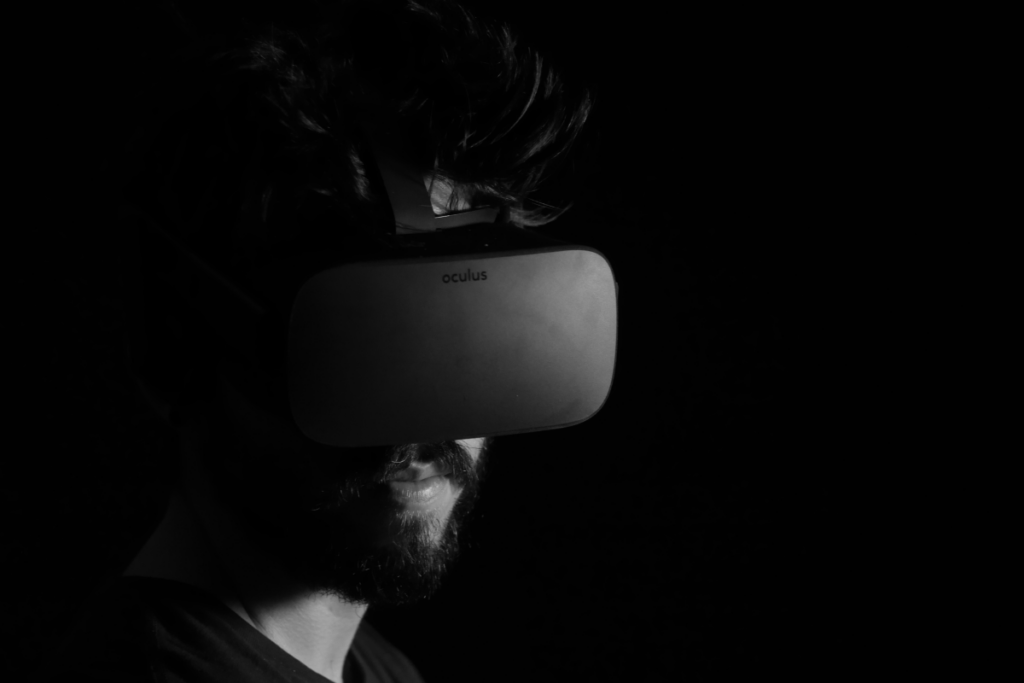
A few years ago, not long after modern virtual reality rose to commercial prominence, the idea began to circulate that VR would come to define the fashion industry. It was thought that those interested in the said industry would be tuning in to runway shows broadcasted through virtual reality goggles. It has been broadly suggested that VR would become the new normal in retail and would assist shoppers with “trying on” and picking out clothing. The technology, in short, was going to reshape fashion from top to bottom –– from the unveiling of styles to the retail level.
Five years on from the writing of that CNN piece, it’s fair to say that this VR revolution hasn’t taken place. It is not common to find stores or brands practically implementing VR (we’re betting many readers have never come across examples), and virtual reality is not often discussed anymore as part of the future. Indeed, our own technology trends in fashion piece left VR out altogether.
Whether or not this will change may depend on the state of VR more broadly. And this gives rise to some interesting questions: Are all industries failing to adopt and implement VR as expected? Or is the fashion industry alone and falling behind with VR innovation?
In considering this question, it’s clear that there are some industries that have made more tangible progress with VR:
Architecture
Back in 2017, an article on VR in architecture spoke to the breadth of potential the technology had in this sector. The article listed initial design mock-ups, project collaboration, and finishing touches all as aspects of an architect’s job that could be enhanced through VR; it also alluded to showcases whereby prospective buyers could virtually “tour” properties in VR. These concepts haven’t come to fruition quite as quickly or widely as expected –– but they are getting there. JZMK Partners in California, for instance, is now using VR to design homes. And earlier this year, the firm Oppenheim Architecture launched a VR gallery showcasing its work.
Gaming
Gaming may well generate more news and headlines than any other industry when it comes to VR adoption. And while some particularly hardcore or tech-savvy gamers have been disappointed at the pace of adoption, we have reached the point at which there are countless VR games of note. These games cover genres ranging from flight and exploration to combat, to sports, to musical rhythm –– with some of the most popular titles in 2022 being Beat Saber, Moss, Half-Life: Alyx, Hitman 3, and Star Wars: Squadrons. Suffice it to say VR gaming has arrived.
Poker
The poker industry was pegged early on as a natural adapter for VR. It’s a popular game worldwide, and it requires very little movement. This means that virtual reality can use atmosphere and immersion without incorporating the more complex elements of locomotion or action. It did take some time for worthwhile VR poker options to appear, but there is now a sort of flagship experience in the form of PokerStars VR. A rundown of leading poker apps describes PokerStars as “by far the biggest name in online poker,” which gives you some sense of how significant the company is. And true to form, it has created a smooth and satisfying experience in virtual reality –– pulling online poker into a new era and quite possibly launching the future of internet casino activity.
Education
Education is a broad category, but one that, like poker, was pegged early for VR potential. There have been suggestions over the years of everything from programs helping students explore historical eras “in person,” to virtual meeting spaces that could bring remote learners together. These experiences do exist, but the greater impact in education is in training, particularly for students in fields such as engineering and medicine. In these areas, VR programs facilitate hands-on, first-person practice for students and better prepare them for the ”real thing” in their future careers.
Mental Healthcare
Some of the categories above may get more attention (particularly gaming), but it’s ultimately in healthcare that the most significant VR adoption has occurred. The VR in healthcare market is poised to reach a value of around $6.2 billion by 2029. This growth is anticipated due to numerous existing and potential applications. However, the research write-up emphasizes that individuals have sought VR headsets for their potential to address mental health needs. The technology has already been employed in this specific space to treat phobias, manage PTSD, decrease anxiety, and more.
What these examples show is that VR has made progress across numerous industries. It may not have been the tech many expected, and it certainly hasn’t swept through modern culture like, say, laptops or smartphones before it. But there are areas in which VR is becoming essential, which makes the slowness (or just plain lack) of adoption in fashion somewhat surprising.
For now, it appears that fashion has indeed fallen behind with VR adoption.





Leave a Reply